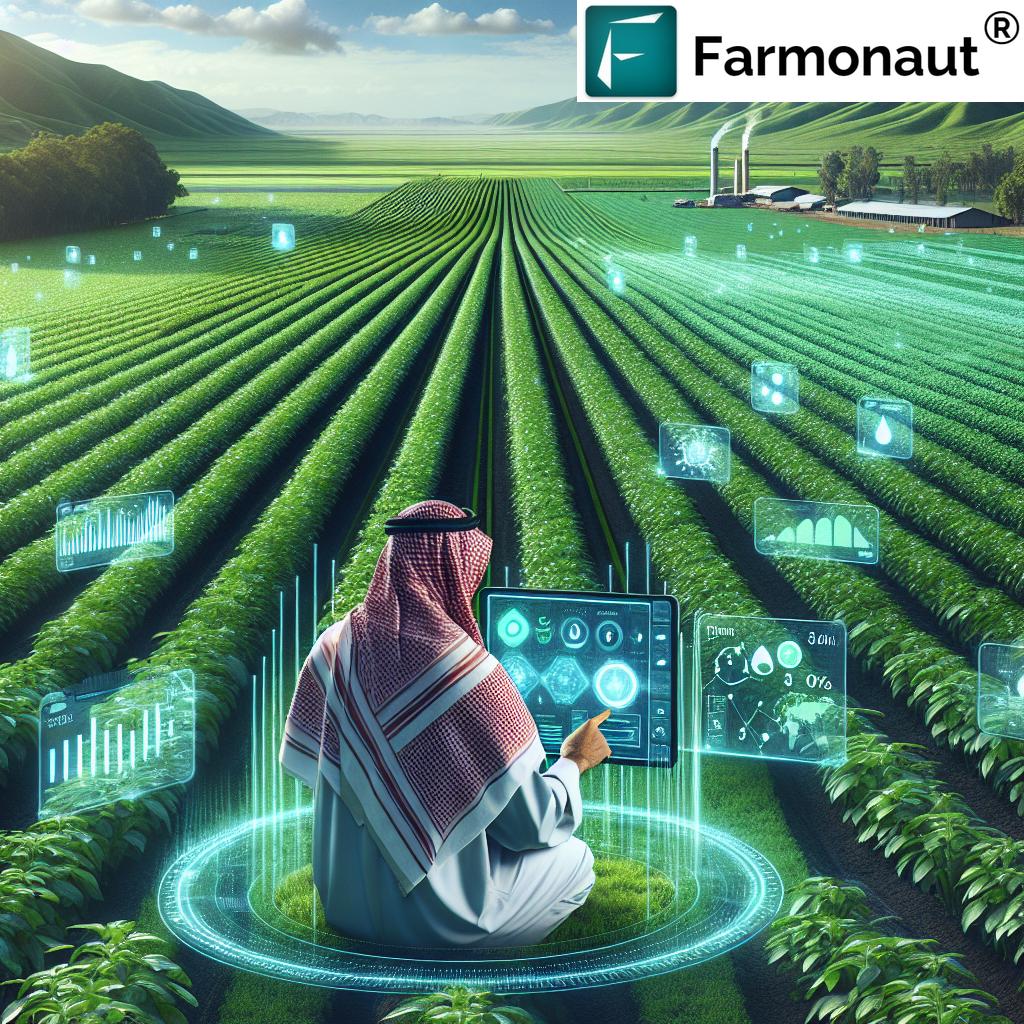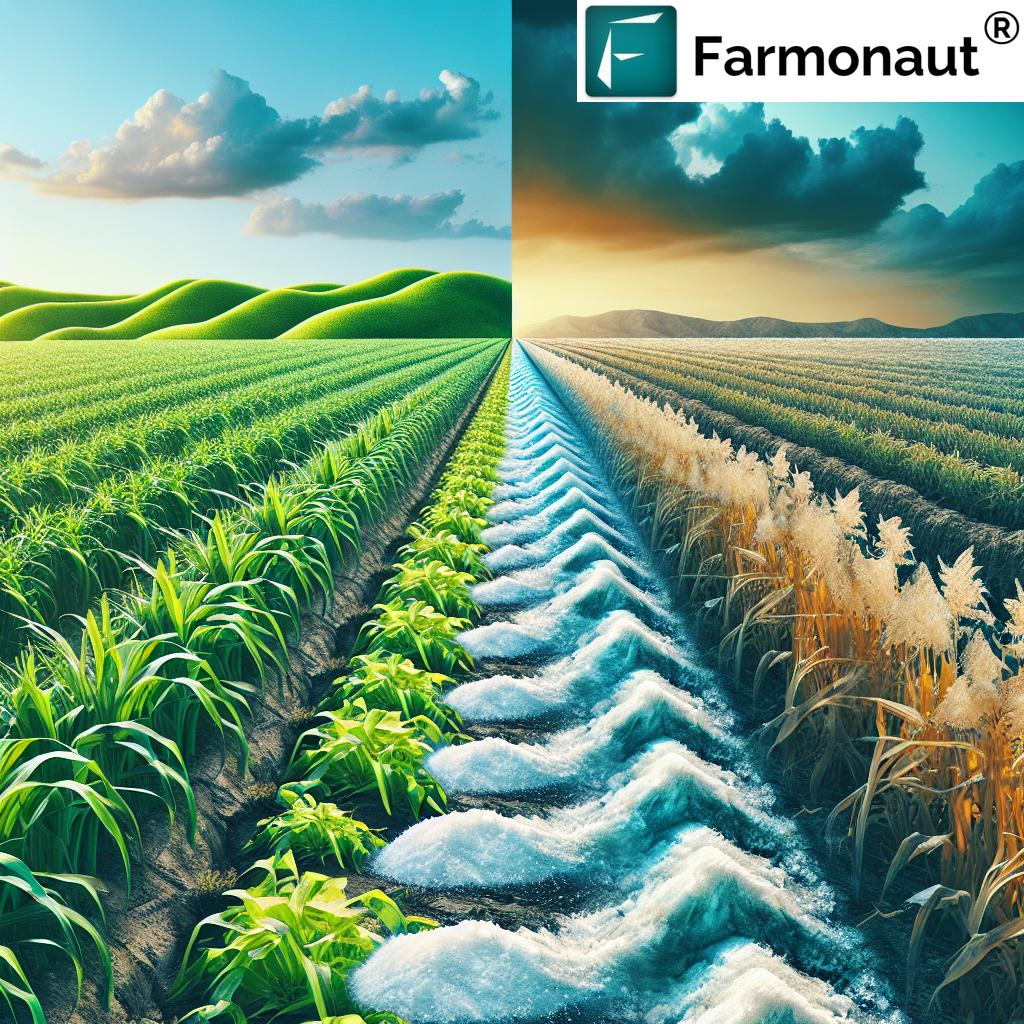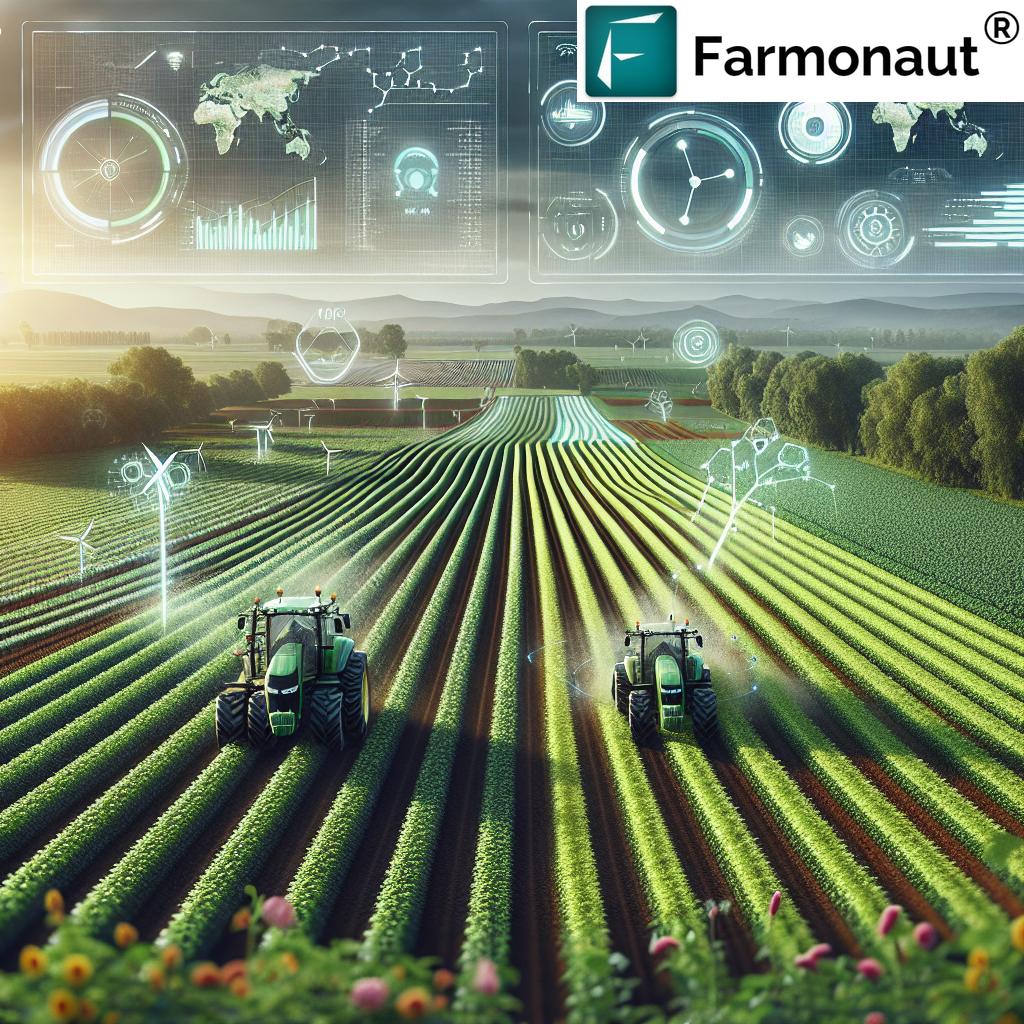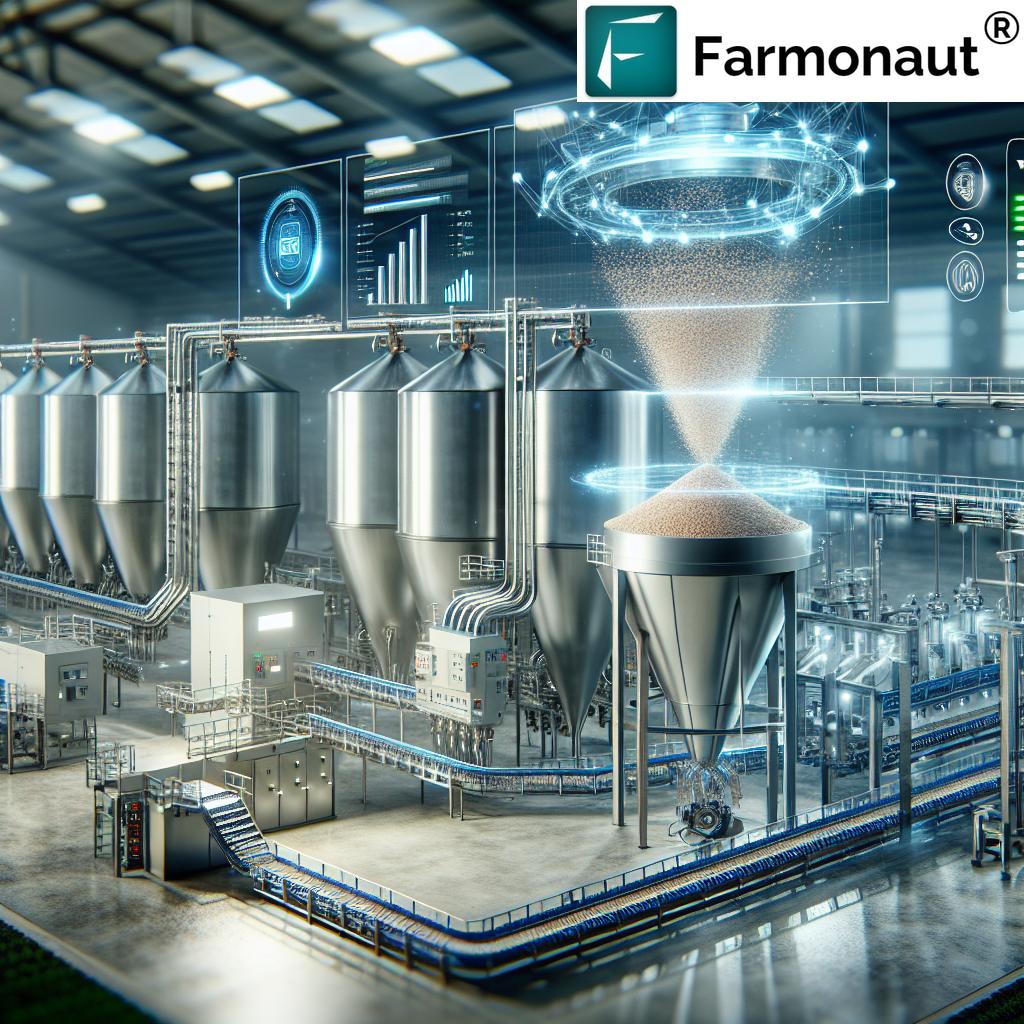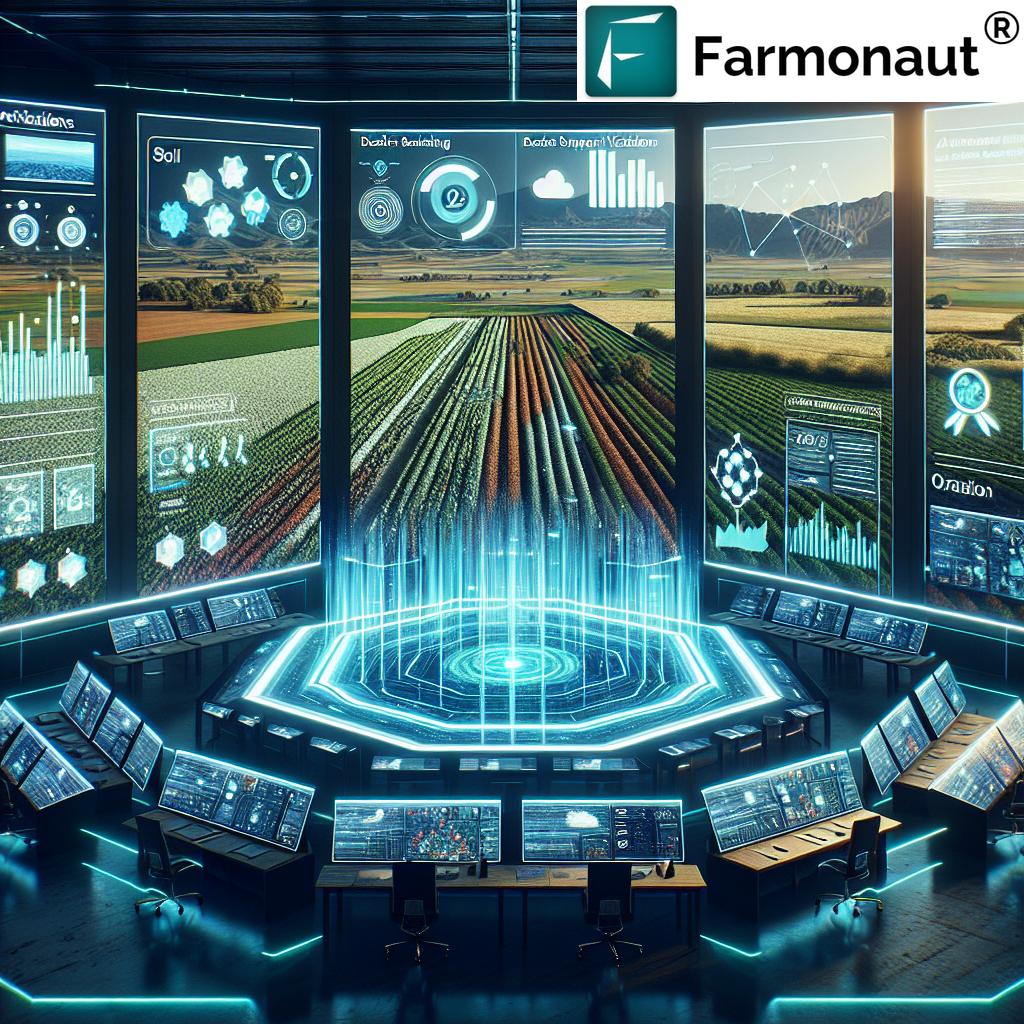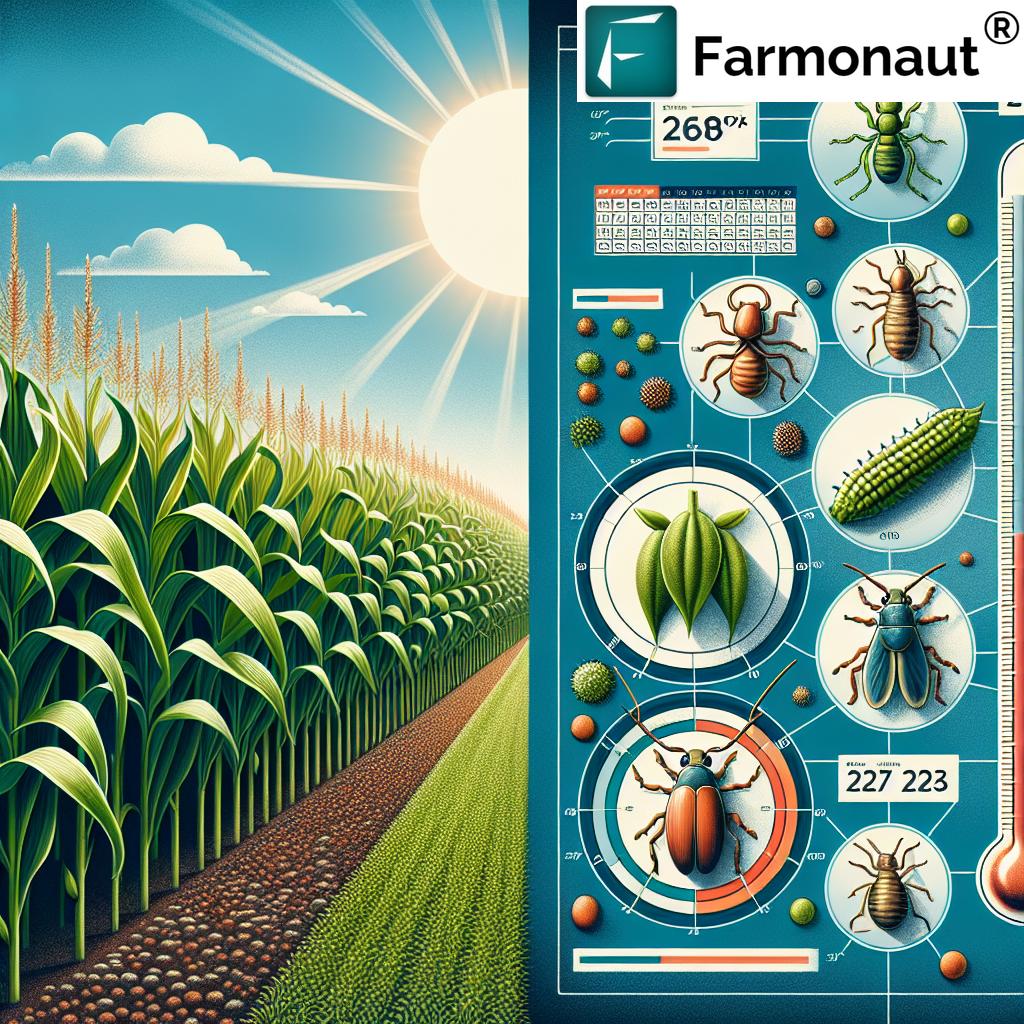Revolutionizing Australian Vineyards: How Precision Agriculture GIS Boosts Sustainable Wine Production and Export Growth
“Australian vineyards using precision agriculture GIS have seen up to 30% increase in sustainable wine production.”

In the sun-drenched vineyards of Australia, a revolution is underway. As we explore the lush rows of grapevines stretching across the horizon, we’re witnessing the dawn of a new era in sustainable viticulture and wine production. The integration of precision agriculture GIS (Geographical Information Systems) is transforming the way we grow, produce, and export Australian wines, setting new standards for quality, sustainability, and market competitiveness.
In this comprehensive guide, we’ll dive deep into how cutting-edge vineyard management tools and agtech innovations are reshaping the landscape of Australian winegrowing. From the implementation of climate-smart viticulture strategies to revolutionary approaches in pest and disease control in vineyards, we’ll uncover the technologies and practices that are propelling the Australian wine industry into a future of sustainable growth and global market leadership.
The Global Wine Market: A Landscape of Opportunity and Challenge
Before we delve into the specifics of precision agriculture in Australian vineyards, it’s crucial to understand the context of the global wine market trends shaping the industry:
- Increasing demand for sustainable and organic wines
- Growing competition from emerging wine-producing regions
- Shifting consumer preferences towards premium and boutique wines
- The impact of climate change on traditional winegrowing regions
These trends present both challenges and opportunities for Australian wine producers. By embracing precision agriculture GIS and sustainable practices, the Australian wine industry is positioning itself to not only meet these challenges head-on but to thrive in an evolving global marketplace.
Precision Agriculture GIS: The Cornerstone of Modern Viticulture
At the heart of Australia’s viticultural revolution lies precision agriculture GIS. This technology allows vineyard managers to:
- Map and analyze soil composition with unprecedented accuracy
- Monitor vine health and vigor in real-time
- Optimize irrigation and fertilization practices
- Predict and manage pest and disease outbreaks
By leveraging satellite imagery, drones, and advanced sensors, precision agriculture GIS provides a level of insight into vineyard conditions that was previously unimaginable. This data-driven approach enables winegrowers to make informed decisions that not only improve wine quality but also enhance sustainability and resource efficiency.
One of the pioneers in this field is Farmonaut, a company at the forefront of agricultural technology. Their satellite-based farm management solutions are making precision agriculture accessible and affordable for winegrowers across Australia. By integrating AI-driven insights with satellite imagery, Farmonaut’s platform offers vineyard managers a comprehensive suite of tools for monitoring crop health, optimizing resource use, and enhancing overall vineyard productivity.
Climate-Smart Viticulture: Adapting to a Changing Environment
As climate change continues to impact traditional winegrowing regions, the adoption of climate-smart viticulture practices has become essential. Australian vineyards are leading the way in implementing strategies to mitigate the effects of rising temperatures, unpredictable rainfall, and extreme weather events:
- Drought-resistant rootstock selection
- Canopy management techniques to protect grapes from excessive sun exposure
- Water-efficient irrigation systems guided by precision soil moisture monitoring
- Experimentation with alternative grape varieties suited to warmer climates
These adaptive strategies not only ensure the continued production of high-quality wines but also contribute to the overall sustainability of the industry. By reducing water usage and minimizing the need for chemical interventions, climate-smart practices align perfectly with the growing consumer demand for environmentally responsible wines.
Innovative Pest and Disease Control: Protecting Vineyard Health
Effective pest and disease control in vineyards is crucial for maintaining grape quality and ensuring consistent yields. Traditional approaches often relied heavily on chemical treatments, but precision agriculture GIS is enabling more targeted and environmentally friendly methods:
- Early detection of pest infestations and disease outbreaks through satellite and drone imagery
- Precision application of treatments only where and when needed
- Promotion of biodiversity to encourage natural pest predators
- Implementation of IoT sensors for real-time monitoring of vineyard conditions
These innovative approaches not only reduce the environmental impact of pest control but also help vineyards meet stringent export regulations regarding chemical residues in wines.
Sustainable Winery Practices: From Vine to Bottle
Sustainable wine production extends beyond the vineyard to encompass all aspects of winery operations. Australian wineries are adopting a range of practices to minimize their environmental footprint:
- Energy-efficient processing equipment and renewable energy sources
- Water recycling and rainwater harvesting systems
- Sustainable packaging solutions, including lightweight bottles and alternative closures
- Organic and biodynamic certification programs
These initiatives not only reduce the environmental impact of wine production but also resonate with eco-conscious consumers in key export markets.

Agricultural Waste Management and Recycling in Winemaking
Effective agricultural waste management and recycling in winemaking are becoming increasingly important aspects of sustainable viticulture. Australian wineries are implementing innovative solutions to reduce waste and maximize resource efficiency:
- Composting grape pomace and other organic waste for use as fertilizer
- Upcycling waste products into value-added goods like grape seed oil
- Implementing closed-loop systems to minimize water waste
- Exploring bio-based alternatives for vineyard posts and other infrastructure
These practices not only reduce the environmental impact of wine production but also create new revenue streams and enhance the overall sustainability of vineyard operations.
“The global wine market has experienced a 15% growth in eco-friendly wine exports due to sustainable viticulture practices.”
Precision Viticulture Technologies: A Comparative Analysis
To better understand the impact of precision agriculture on vineyard management, let’s examine a comparison between traditional methods and the advanced techniques enabled by systems like Farmonaut’s satellite-based platform:
| Vineyard Management Aspect | Traditional Method | Farmonaut Satellite System Approach | Estimated Resource Savings (%) | Potential Yield Increase (%) | Environmental Impact Reduction (scale 1-5) |
|---|---|---|---|---|---|
| Irrigation | Scheduled watering | Precision irrigation based on real-time soil moisture data | 30-40% | 10-15% | 4 |
| Pest Control | Blanket spraying | Targeted treatment based on early detection | 50-60% | 5-10% | 5 |
| Yield Prediction | Manual sampling | AI-driven analysis of satellite imagery | 70-80% | N/A | 3 |
| Fertilizer Application | Uniform application | Variable rate application based on soil nutrient maps | 20-30% | 8-12% | 4 |
| Harvest Timing | Visual inspection | Data-driven decision making using multiple parameters | 10-20% | 15-20% | 3 |
This comparison clearly demonstrates the significant advantages of adopting precision viticulture technologies like those offered by Farmonaut. The substantial resource savings, potential yield increases, and reduced environmental impact make a compelling case for the widespread adoption of these innovative tools in Australian vineyards.
Vineyard Planting Strategies for Long-term Success
Vineyard planting strategies are evolving to incorporate the latest insights from precision agriculture and climate science. Key considerations include:
- Optimal site selection based on detailed soil and microclimate analysis
- Variety selection tailored to projected climate conditions
- Row orientation and spacing to maximize sunlight exposure and air circulation
- Implementation of cover crops for soil health and erosion control
By leveraging GIS data and predictive modeling, vineyard managers can make informed decisions that set the foundation for decades of successful wine production.
Explore Farmonaut’s API for advanced vineyard mapping and analysis
Navigating Wine Export Regulations in a Changing Global Landscape
As Australian wine producers look to expand their presence in international markets, understanding and complying with wine export regulations is crucial. Key considerations include:
- Labeling requirements specific to different export destinations
- Adherence to organic and biodynamic certification standards
- Compliance with limits on pesticide residues and additives
- Navigation of tariffs and trade agreements
Precision agriculture GIS plays a vital role in meeting these regulatory challenges by providing detailed documentation of vineyard practices and ensuring consistency in wine quality and composition.
Wine Tourism Development: Showcasing Sustainable Viticulture
Wine tourism development represents a significant opportunity for Australian vineyards to diversify their revenue streams and build brand loyalty. Sustainable viticulture practices and precision agriculture technologies can be powerful drawcards for visitors:
- Educational tours showcasing precision viticulture in action
- Interactive displays demonstrating the environmental benefits of sustainable winemaking
- Tasting experiences that highlight the connection between terroir and technology
- Eco-lodges and farm stays integrated with working vineyards
By offering unique, sustainability-focused experiences, Australian wineries can attract discerning tourists and create ambassadors for their brands in key export markets.
The Future of Australian Wine: Innovation, Sustainability, and Global Leadership
As we look to the future of the Australian wine industry, it’s clear that the integration of precision agriculture GIS and sustainable practices will play a pivotal role in shaping its success. By embracing innovation, Australian vineyards are not only enhancing their productivity and sustainability but also setting new standards for quality and environmental stewardship in the global wine market.
The journey towards fully sustainable and technologically advanced viticulture is ongoing, with exciting developments on the horizon:
- Integration of AI and machine learning for predictive vineyard management
- Development of drought-resistant grape varieties through advanced breeding techniques
- Implementation of blockchain technology for enhanced traceability and authenticity verification
- Exploration of robotics and automation for labor-intensive vineyard tasks
As these technologies mature and become more widely adopted, we can expect to see continued growth in sustainable wine production and a strengthening of Australia’s position in key export markets.
In conclusion, the revolution in Australian vineyards driven by precision agriculture GIS and sustainable practices is not just transforming wine production—it’s redefining what it means to be a leader in the global wine industry. By embracing innovation, prioritizing sustainability, and leveraging cutting-edge technologies like those offered by Farmonaut, Australian wine producers are well-positioned to meet the challenges of a changing climate and evolving market demands.
As we raise a glass of Australian wine, we’re not just savoring the fruits of the vineyard—we’re tasting the future of sustainable, technologically advanced viticulture. Here’s to the continued success and innovation of the Australian wine industry on the global stage.
Farmonaut Subscriptions
Frequently Asked Questions
Q: How does precision agriculture GIS improve wine quality?
A: Precision agriculture GIS enhances wine quality by providing detailed insights into soil composition, vine health, and microclimate conditions. This allows for targeted interventions and optimized growing conditions, resulting in higher quality grapes and, ultimately, better wines.
Q: What are the main benefits of sustainable viticulture for Australian wine exports?
A: Sustainable viticulture practices enhance the marketability of Australian wines in environmentally conscious export markets, reduce production costs through resource efficiency, and ensure long-term viability in the face of climate change.
Q: How can small vineyards afford to implement precision agriculture technologies?
A: Companies like Farmonaut are making precision agriculture more accessible by offering affordable, satellite-based solutions that don’t require expensive on-ground equipment. Additionally, many technologies offer scalable options suitable for smaller operations.
Q: What role does AI play in modern vineyard management?
A: AI is increasingly used for predictive modeling of pest outbreaks, yield forecasting, and optimizing irrigation and fertilization schedules. It helps vineyard managers make data-driven decisions for more efficient and sustainable operations.
Q: How is the Australian wine industry addressing climate change challenges?
A: The industry is adapting through various means, including the adoption of drought-resistant grape varieties, implementation of water-efficient irrigation systems, and the use of precision agriculture GIS to monitor and respond to changing environmental conditions.
Access Farmonaut’s API Developer Documentation for advanced integration






